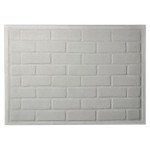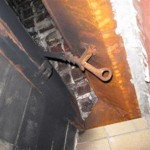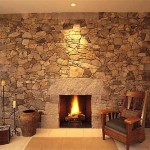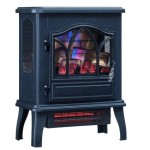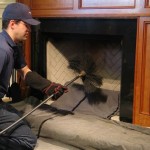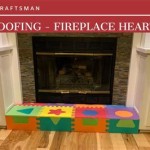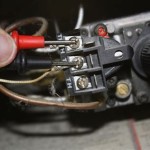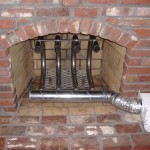How Much Does It Cost To Install A Gas Fireplace?
Installing a gas fireplace can significantly enhance a home's ambiance and provide a reliable heat source. However, understanding the associated costs is crucial for budgeting purposes. The total expense can vary widely depending on several factors, making it essential to consider each element individually. This article will delve into the various components contributing to the overall cost of gas fireplace installation.
The price of a gas fireplace itself is a significant factor influencing the total cost. These appliances range from relatively inexpensive models to high-end, technologically advanced units. The style, size, and features of the fireplace will all impact its price. Entry-level models might cost between $500 and $1,500. These typically offer basic functionality and simpler designs. Mid-range gas fireplaces, offering enhanced features and aesthetic appeal, can range from $1,500 to $4,000. High-end units, often featuring custom designs, advanced heating technology, and premium materials, can easily exceed $4,000 and reach upwards of $10,000 or more.
The type of gas fireplace is particularly relevant to the overall cost. There are primarily three types: direct vent, vent-free (also known as ventless), and B-vent fireplaces. Each type has its own installation requirements and associated expenses. Direct vent fireplaces are the most common and generally considered the safest option. They vent exhaust gases directly outside, preventing them from entering the home. Vent-free fireplaces, as the name implies, do not require venting, but they are subject to certain restrictions and may not be permitted in all jurisdictions due to indoor air quality concerns. B-vent fireplaces utilize existing chimneys, which can reduce installation costs if a suitable chimney is already present. However, if a new chimney is required, the cost can be substantial.
The cost of labor is another significant factor. Installation should be performed by qualified professionals to ensure safety and compliance with local building codes. Labor costs can vary depending on the complexity of the installation, the geographical location, and the prevailing rates charged by local contractors. A straightforward installation, such as replacing an existing gas fireplace with a similar model, might cost between $300 and $800 in labor. More complex installations, involving new gas line connections or extensive venting work, can easily exceed $1,000 or even $2,000 in labor costs.
Key Point 1: Cost of the Fireplace Unit
The specific features and design of the gas fireplace significantly influence its price. Factors contributing to these variations include the heating capacity (measured in BTUs), the type of ignition system (standing pilot vs. electronic ignition), the firebox material (steel vs. cast iron), and any additional features, such as remote controls, programmable thermostats, or decorative logs. Models with higher BTU ratings, suitable for heating larger spaces, will generally cost more. Electronic ignition systems, which eliminate the need for a standing pilot light, can save on energy costs but may increase the initial purchase price. Similarly, fireplaces with cast iron fireboxes, known for their superior heat retention, tend to be more expensive than those with steel fireboxes.
Aesthetic features also contribute to the overall cost. Gas fireplaces are available in a wide range of styles, from traditional to contemporary. Models with realistic-looking logs, brick liners, or decorative surrounds will typically command a higher price. Custom designs, allowing for a unique aesthetic tailored to the homeowner's preferences, can significantly increase the cost. The size of the viewing area, the quality of the glass, and the overall craftsmanship also play a role in determining the final price of the unit.
Furthermore, certain brands are known for their quality and innovation, and their products often come with a premium price tag. Researching different brands and comparing models based on features, performance, and warranty is essential for making an informed purchasing decision. Reading customer reviews and consulting with fireplace professionals can provide valuable insights into the reliability and performance of different models.
Key Point 2: Installation Labor and Related Expenses
The complexity of the installation directly impacts the labor costs. A simple replacement of an existing gas fireplace, where the gas line and venting are already in place, will typically be less expensive than a new installation requiring gas line extensions or the construction of a new vent. The location of the fireplace also affects the labor costs. Installing a fireplace on an exterior wall, where venting can be easily routed, is generally less expensive than installing one on an interior wall, requiring more extensive venting work. Similarly, installing a fireplace on an upper floor can increase labor costs due to the added difficulty of transporting materials.
Connecting the gas line is a critical aspect of the installation process. If a gas line is not already present at the desired location, a licensed plumber will need to run a new gas line from the main gas supply. This can involve trenching, running pipes through walls or floors, and connecting the gas line to the fireplace. The cost of this work can vary depending on the distance from the main gas supply, the accessibility of the area, and the local plumbing rates. Permits are generally required for gas line installations, adding an additional cost to the project.
Venting is another critical element of the installation. Direct vent fireplaces require venting to the exterior of the home. The cost of venting depends on the type of vent pipe used, the length of the vent run, and the complexity of the installation. Venting can be routed horizontally through an exterior wall or vertically through the roof. Vertical venting is generally more expensive due to the added height and complexity. In some cases, structural modifications may be necessary to accommodate the venting, further increasing the cost.
Finally, electrical work may be required, particularly for gas fireplaces with electronic ignition systems or remote controls. An electrician may need to run a new electrical circuit to the fireplace location or install an outlet. The cost of electrical work can vary depending on the complexity of the wiring and the local electrical rates. As with gas line installations, permits are generally required for electrical work.
Key Point 3: Additional Costs to Consider
Beyond the cost of the fireplace unit and the installation labor, several other expenses may arise. Permits are often required for gas fireplace installations, and the cost of these permits can vary depending on the local building codes and regulations. Failing to obtain the necessary permits can result in fines and delays, so it is essential to check with the local building department before starting the project. Inspections are typically required after the installation is complete to ensure compliance with the building codes. The cost of these inspections is usually included in the permit fees.
Framing and finishing work may also be necessary. Installing a gas fireplace often involves creating a framed enclosure to house the unit and to provide a finished look. This may require hiring a carpenter to build the frame and install drywall, trim, and other finishing materials. The cost of framing and finishing work can vary depending on the size and complexity of the enclosure and the type of materials used.
Decorative elements, such as mantels, surrounds, and hearths, can also add to the overall cost. Mantels can range from simple wooden shelves to elaborate custom-built structures. Surrounds, which frame the fireplace opening, can be made from a variety of materials, including stone, brick, tile, or wood. Hearths, which provide a non-combustible surface in front of the fireplace, are typically made from stone, tile, or brick. The cost of these decorative elements can vary widely depending on the materials used and the complexity of the design.
Finally, consider the cost of ongoing maintenance. Gas fireplaces require periodic maintenance to ensure safe and efficient operation. This may include cleaning the burner assembly, inspecting the venting system, and checking the gas connections. It is recommended to have a professional service the fireplace annually. The cost of an annual service can vary depending on the extent of the service and the local rates charged by fireplace technicians.
In summary, the cost of installing a gas fireplace is a multifaceted expense influenced by the price of the unit, the complexity of the installation, and various additional factors. Thorough research and careful planning are crucial for accurately budgeting for the project and ensuring a successful outcome.

How Much Does A Gas Fireplace Cost Fireplaces Direct Learning Center

How Much Does It Cost To Install A Gas Fireplace Homeserve Usa

How Much Does A Gas Fireplace Cost Fireplaces Direct Learning Center

Gas Fireplace Cost Guide Unit Add Ons Installation More

Gas Fireplace Insert Cost Forbes Home

Estimated Page Fireplaces Stoves Inserts Wood Gas Pellet

What Does It Cost To Install A Fireplace Vs Wood Stove Stamford Fireplaces

Fireplace Installation Cost 2024 Gas Wood Burning Electric

Gas Fireplace Installation Cost Dbs Inc

How Much Does It Cost To Put In A Gas Log Fireplace Northern Va Winston S
Related Posts

